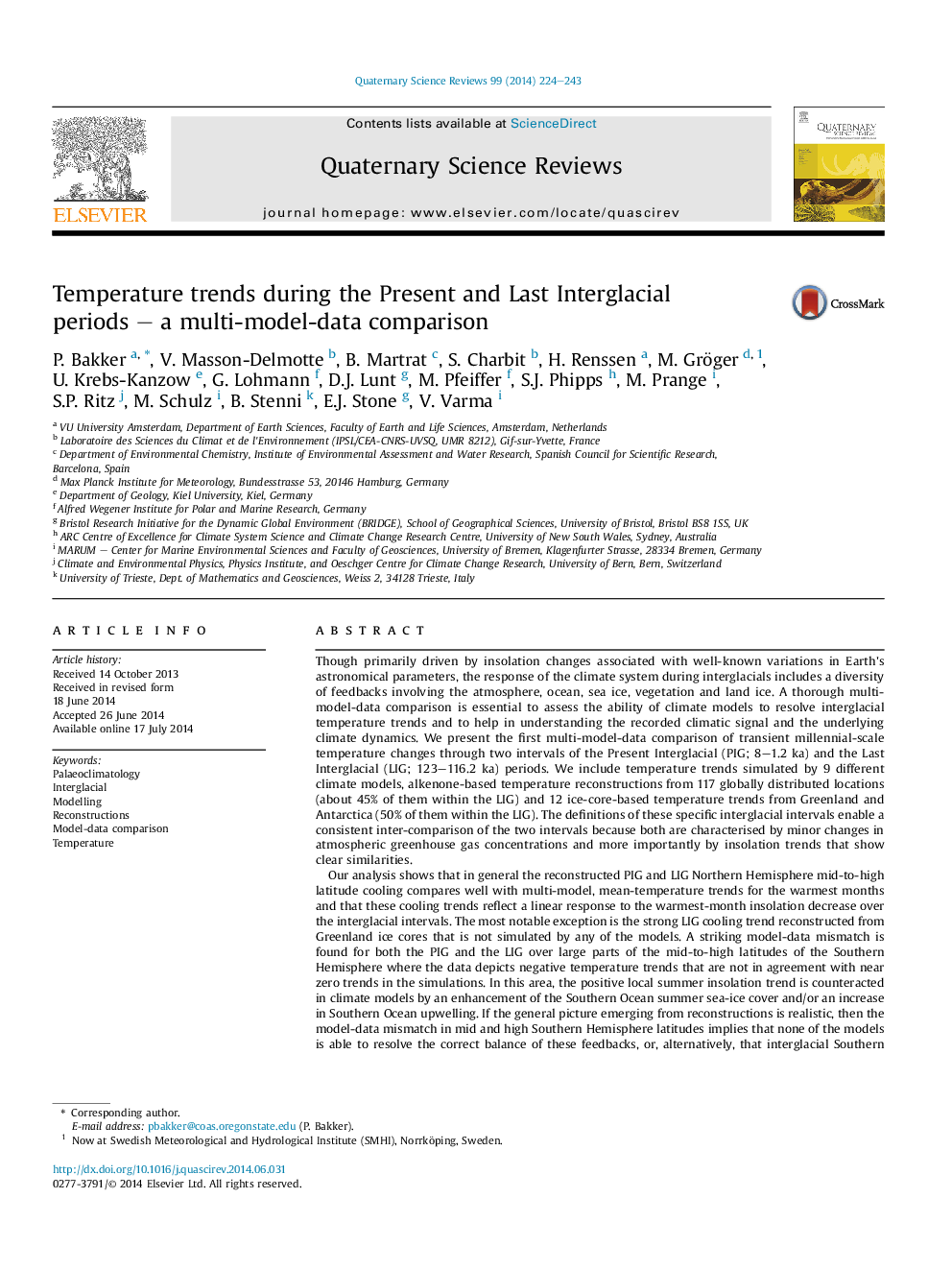| Article ID | Journal | Published Year | Pages | File Type |
|---|---|---|---|---|
| 6445580 | Quaternary Science Reviews | 2014 | 20 Pages |
Abstract
Our analysis shows that in general the reconstructed PIG and LIG Northern Hemisphere mid-to-high latitude cooling compares well with multi-model, mean-temperature trends for the warmest months and that these cooling trends reflect a linear response to the warmest-month insolation decrease over the interglacial intervals. The most notable exception is the strong LIG cooling trend reconstructed from Greenland ice cores that is not simulated by any of the models. A striking model-data mismatch is found for both the PIG and the LIG over large parts of the mid-to-high latitudes of the Southern Hemisphere where the data depicts negative temperature trends that are not in agreement with near zero trends in the simulations. In this area, the positive local summer insolation trend is counteracted in climate models by an enhancement of the Southern Ocean summer sea-ice cover and/or an increase in Southern Ocean upwelling. If the general picture emerging from reconstructions is realistic, then the model-data mismatch in mid and high Southern Hemisphere latitudes implies that none of the models is able to resolve the correct balance of these feedbacks, or, alternatively, that interglacial Southern Hemisphere temperature trends are driven by mechanisms which are not included in the transient simulations, such as changes in the Antarctic ice sheet or meltwater-induced changes in the overturning circulation.
Related Topics
Physical Sciences and Engineering
Earth and Planetary Sciences
Geology
Authors
P. Bakker, V. Masson-Delmotte, B. Martrat, S. Charbit, H. Renssen, M. Gröger, U. Krebs-Kanzow, G. Lohmann, D.J. Lunt, M. Pfeiffer, S.J. Phipps, M. Prange, S.P. Ritz, M. Schulz, B. Stenni, E.J. Stone, V. Varma,
